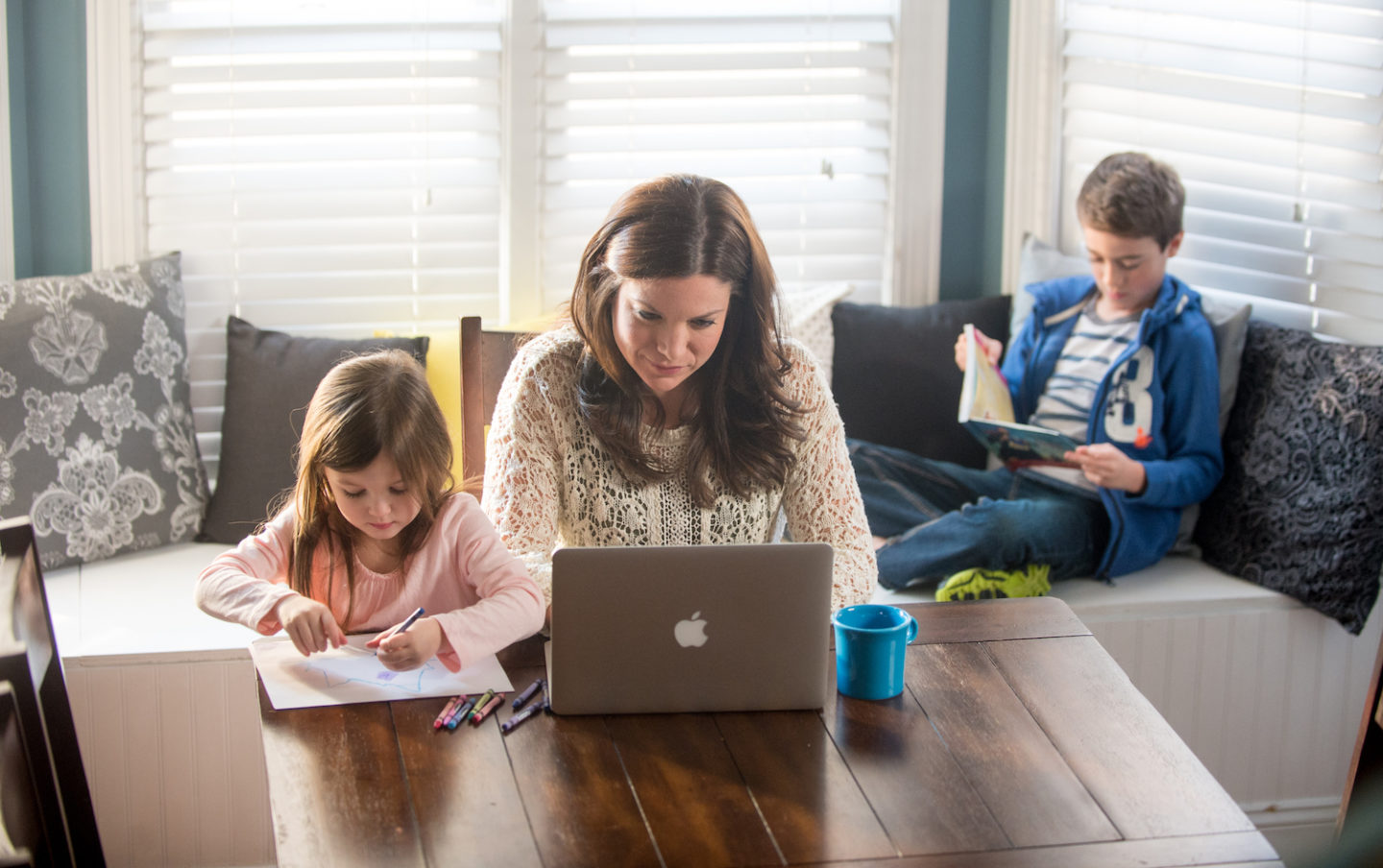
Pandemic Homeschooling
By Indiana State University
Apr 20, 2020
Parents whose patience have been exhausted trying to help complete your fifth grader’s math homework in face of the global pandemic, you’re not alone.
Take a deep breath.
One of the healthiest things families might do is establish routines and schedules, said Melissa Nail, professor of education in Indiana State University’s Bayh College of Education.
“This adds some normalcy back into children’s (and adults’) lives. Don’t strive to keep the same schedule and routines as we had pre-pandemic. That will tend to add more unnecessary stress as families try to fit their lives into the schedules and routines dictated by so many outside forces,” she said. “Instead, establish routines and schedules that work for the family during this time. Children’s internal clocks do not often run on the schedule of the normal school day, so take advantage of this time to set a schedule that works for you and your family.”
If parents need quiet time in the morning to accomplish some tasks or just to keep sanity, Nail suggests setting a schedule that lets the kids sleep in an hour or two longer than the parents. This will also help ensure that the kids have a full 8-10 hours of sleep each night and it will help ensure that you have time for yourself. Schedule a time for meals, for TV, for games/play, for lessons, for chores, and for free-time.
“As we all struggle to come to terms with the “new normal”, we can embrace this as a new learning experience for our children. A goal of learning is to become problem solvers,” Nail said. “We can use this time to model problem solving with our children. We can “think out loud” and work with our children to solve problems. Involve them in setting up a schedule and routines. When they have questions about schoolwork, think through the questions with them. Parents should not feel like they must have all the answers and learners should not just be given all the answers. Instead, work with children to find answers. Model how to ask questions, how to revise questions, and how to search for information.”
For parents who find it difficult to teach art or music lessons for their children, Julia Reynolds, assistant professor of music, suggests searching online.
“Know that other parents are having a hard time with this, too. We are a go, go, go society, and parents are adjusting to the constant needs of their kids and now wearing multiple hats for long parts of the day,” Reynolds said. “Parents have to be OK with trying their best and not comparing themselves to all the ‘picture perfect’ versions of stay-at-home that are all over social media. Everyone has a different situation and need; we are not the same. For some parents just feeding kids lunch is a battle won…not everyone will have the special desk areas and color coded daily schedule – and that has to be OK.”
The good news from Indiana State Associate Professor Ryan Donlan, who serves as Chair of the Bayh College of Education’s Department of Teaching and Learning, is you don’t necessarily need to be a content expert.
“Rather, be a go-to person for resources. Spend time and energy looking up websites and resources that can help your children learn, so if they need help, you can help them access the help they need,” Donlan suggests. “Model online work as a parent, if you can, or if not online work, online learning while children are also learning. It’s important that children see their parents as engaged and interested.”
In instances where remote working for adults and remote learning for students is online, Donlan advises getting a hotspot if possible because parental remote working might interfere with a child’s bandwidth and access as they try to complete schoolwork.
Donlan suggests that time children spend on their online schoolwork should be congruent with students’ energies for learning and staying within their own Zones of Proximal development.
“A ‘few-hour blocks’ are a nice rule of thumb, yet some children need more frequent breaks and others can engage longer,” he said. “Again, it really depends on the child, yet developmental psychologists keep us aware of appropriate spans of engagement for typical ages.”
Parents can also use online tutorials when children have questions about their school work. Linda Behrendt, associate professor and chair of the department of applied health sciences, recommends parents check out sites like https://www.khanacademy.org/, which provides free, high quality online learning for K-12 students.
“Take advantage of screen time as a way to connect with their friends. FaceTime, Zoom, and similar platforms allow for virtual time for children. These connections can be scheduled as part of breaks during the “school day,” or used as encouragement to complete projects,” she said. “Help children think of new ways to spend time with their friends. Children can create messages on the driveways or sidewalks of their friends, or come up with new ways to play favorite games with their friends; think “Mad-libs” done over Face Time.”
While it may seem like a stressful time, Behrendt suggests viewing the experience as a chance for character building and document the rare chance to spend quality time with the children through activities like journaling.
“Help children to reframe their thoughts about being quarantined. Help them identify what the positives because it’s not all bad and recognize that the future will be better than the present,” she said. “Assist children in realizing that they have the power to make the future better, and that there are many paths to get to that bright future.”
There are also some basics to remember throughout this shared child-parent learning.
“Encourage breaks and battery charges every two hours and adequate sleep and nutrition. Bring healthy foods and snacks to children as they work,” Donlan said. “And support non-traditional hours for children’s remote learning, supporting them when they have the energy.”
Donlan suggests parents try to establish a consistent check-in with any support personnel or special education teachers, if these services are provided. Virtual, synchronous meeting are best, if allowed.
Most importantly, Nail reminds parents that “learning is not a race to be won by coming in first.” Instead, she suggests that think of learning as a long distance marathon, or even a triathlon, in which the goal is to improve your skills and cross the finish line.
“It is okay to be a little behind the cluster, advancing at a reasonable pace, and making progress. Some children might advance more in their problem solving skills or coping skills during online learning. They might find that these new skills serve them well when they return to the classroom (like strengthening skills in one challenge of the triathlon to off-set a weakness in another challenge),” Nail said. “If families are overly concerned about their child being at the top of the class or ‘not getting behind,’ it would be good to remember that we’re all in the same boat. We’re all ‘falling behind’ together.”
The pandemic has put a heightened focus on the structure of how America educates its youngest people when the group setting isn’t possible.
“Probably, remote learning such as we are doing is not conducive to a typical agrarian-calendar school year any longer,” Donlan said. “We would need a more balanced-year approach, if it were to continue.”
This situation has also brought heightened awareness to the importance of social/emotional needs of students and staff/teachers, and upon the impact of learning, no matter the medium, something Donlan think will become an increased focus, “if we’re at our best.”
“There is no replacement for teachers and students being in the classroom, and let’s not pretend that there is. We should continue to envision school as a place folks can be together, and work/play together, face-to-face,” he said. “Through this experience, however, Educators, students, and families will be more efficient and effective in the use of technology in teaching and learning, as well as in resource acquisition and hybrid models of learning.”

